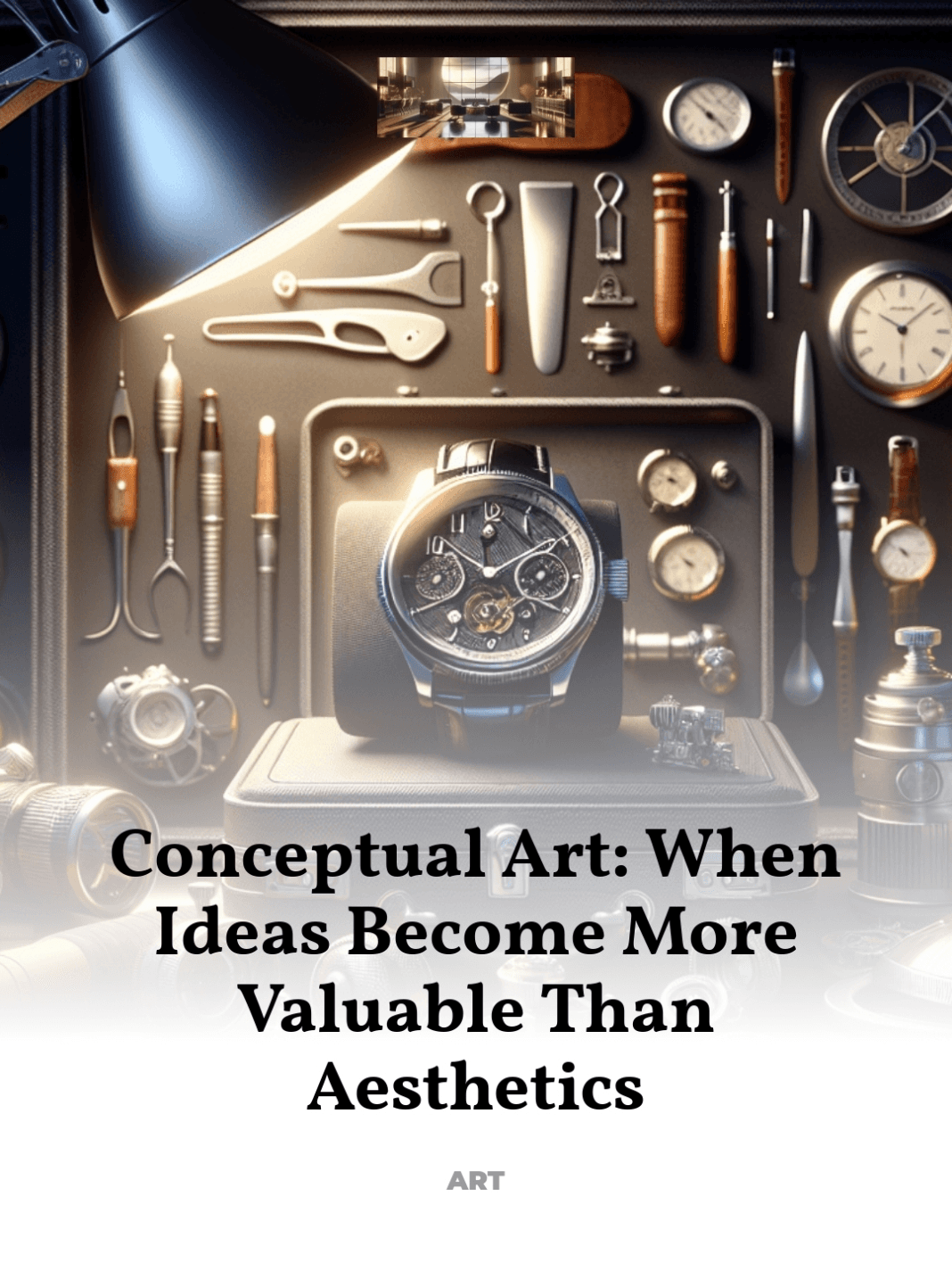How artists like Joseph Kosuth and Damien Hirst changed the definition of art
In the realm of luxury and collectibles, few artistic movements have challenged traditional notions of value and craftsmanship as profoundly as conceptual art. This genre, which emphasizes the idea behind the work over its aesthetic composition, has redefined the boundaries of art itself. Artists like Joseph Kosuth and Damien Hirst stand at the forefront of this revolution, pushing the limits of how art is perceived and valued.
- Defining Conceptual Art
- Joseph Kosuth and His Contributions
- Damien Hirst and the Business of Art
- Impact on the World of Collectibles
- The Future of Conceptual Art in Luxury
Defining Conceptual Art
Conceptual art, a movement that emerged in the 1960s, challenges traditional aesthetics by asserting that the concept or idea involved in the work prevails over traditional material aesthetics. This shift in focus from visual form to intellectual engagement invites viewers to question the nature and value of art itself.
- Origins and Evolution: The movement initially took shape as a reaction against the commodification of art, where the idea began to stand as a work of art on its own, independent of any physical manifestation.
- Philosophical Underpinnings: Heavily influenced by philosophy, particularly the writings of Ludwig Wittgenstein and other linguistic theorists, conceptual artists explore the ways in which concepts conveyed through language can serve as art.
By focusing on ideas over form, conceptual art engages with issues of narrative, perception, and the very process of artistic creation, making it a complex and intellectually challenging genre.
Joseph Kosuth and His Contributions
Joseph Kosuth, an American conceptual artist, has played a pivotal role in the development and understanding of conceptual art. His seminal work, One and Three Chairs (1965), displays a physical chair, a photograph of the chair, and the dictionary definition of a chair, challenging viewers to consider which form represents the “true” essence of the chair.
- Art as Idea as Idea: Kosuth’s philosophy that “art is an idea” has significantly influenced how art is perceived. His work often includes text and language, emphasizing that the idea behind the artistic expression is more critical than the object itself.
- Influence on Art Theory: Kosuth’s writings, particularly his essay “Art after Philosophy” (1969), argue that art should be purely conceptual, devoid of aesthetics or material form. This has been influential in academic and curatorial circles, reshaping art criticism and theory.
Kosuth’s contributions have not only redefined art but have also influenced how collectors and enthusiasts perceive value, shifting focus from tangible craftsmanship to intellectual depth.
Damien Hirst and the Business of Art
Damien Hirst, a British artist known for his controversial and often shocking works, has brought conceptual art into the commercial mainstream. His work, which often explores themes of life, death, and authenticity, challenges both traditional aesthetics and the commercialism of the art world.
- The Physical Impossibility of Death in the Mind of Someone Living: Perhaps his most famous piece, this work features a tiger shark preserved in formaldehyde in a vitrine. It questions the nature of life and the commodification of death, pushing viewers to confront their own perceptions and fears.
- Commercial Success: Hirst’s ability to blur the lines between art and commerce has led to unprecedented commercial success, making him one of the wealthiest living artists. His work raises questions about the role of the market in defining art and its value.
Hirst’s approach to conceptual art highlights its potential to not only provoke thought but also to engage with and critique the commercial structures of the art world itself.
Impact on the World of Collectibles
The influence of conceptual artists like Kosuth and Hirst extends into the realm of luxury collectibles, where the narrative and idea behind a piece can often outweigh traditional considerations of material and craftsmanship.
- Shift in Collector’s Values: Collectors of high-end art are increasingly valuing the intellectual engagement and conceptual depth of artworks over their aesthetic qualities. This shift is reflective of a broader trend in luxury goods towards unique, story-rich pieces.
- Art as Investment: Conceptual art challenges traditional notions of art as a physical asset, redefining what collectors consider valuable. This reevaluation has implications for how art is bought, sold, and understood in the context of heritage and legacy.
The growing appreciation for conceptual art within the luxury market underscores a broader cultural shift towards valuing intellectual and narrative richness, aligning with trends in other luxury sectors that emphasize uniqueness and story over mere opulence.
The Future of Conceptual Art in Luxury
As the luxury market continues to evolve, the influence of conceptual art is likely to grow, reflecting broader cultural shifts towards sustainability, authenticity, and intellectual engagement.
- Sustainability and Ethical Considerations: Conceptual art’s emphasis on ideas over materials aligns well with increasing concerns about sustainability and ethical production in luxury goods.
- Continued Innovation: Artists and designers are likely to continue pushing the boundaries of what art can be, using new technologies and ideas to explore the limits of conceptual art.
In a world where traditional notions of luxury are being continuously redefined, conceptual art stands out for its ability to challenge, provoke, and redefine what is valuable. As such, it remains a vital and dynamic part of the luxury landscape.
For further exploration of conceptual art and its impact on luxury and collectibles, consider visiting authoritative sources such as the Museum of Modern Art’s online archives.



